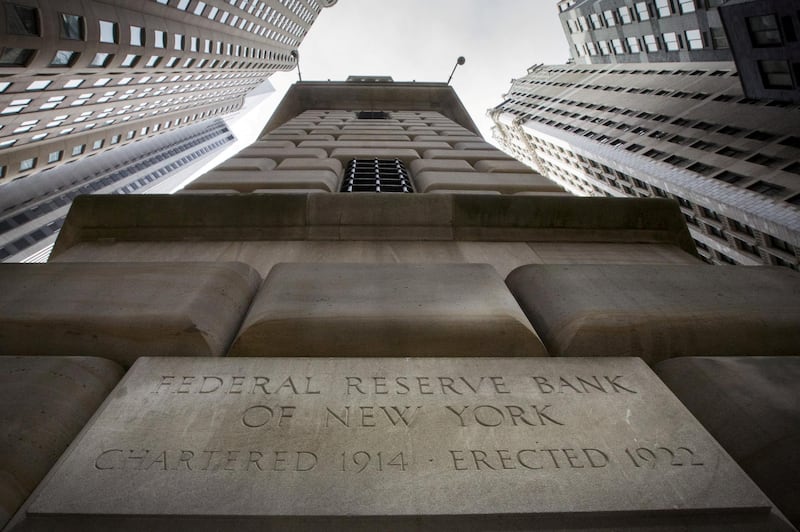Year to date total return on Barclays Bloomberg GCC Bond Index has been a loss of 2.12 per cent, much in line with our expectations at the beginning of the year and almost entirely attributed to rising benchmark US Treasury yields.
The recent sell off in EM bonds on the back of increasing risk aversion arising from strengthening dollar and increasing trade tensions has made valuation attractive on a historical basis. Though several risks continue to lurk on the horizon, we believe it may be time to begin looking at the GCC bonds favourably, particularly in light of following factors:
Rising benchmark yields are becoming a manageable risk: Economic growth in the US is at cyclical high and inflation is expected to increase from here. US Federal Reserve is set to raise its target rate by another 100 to 150 basis points (bps) over the next two years. That said, we think the US Treasury (UST) benchmark yield curve in the longer end is unlikely to rise materially given the uncertain global trade outlook and increasing possibility of the US economic growth having peaked. Since December 2015, while Fed has raised interest rates seven time by a total of 175bps, yield on 10 year US treasuries has only increased 60bps from 2.26 per cent in December 2015 to 2.86 per cent now. We don't expect yields on the 7-to-10-years part of the curve to rise by more than 25 to 75bps even if Fed's target rate was to increase by another 100bps over the next 12 months. GCC bond index has an average duration of circa 6.5 years. A 50bps increase in yield on 5-year benchmark USTs can obviously cause bond prices to fall, however, the fall can be cushioned by the average 4.5 per cent running yield on GCC bonds now.
Stronger dollar and capital outflows will affect EM bonds: The 3-month long trade war between largest economies of the world - US and China - has left financial markets in a conundrum. EM currencies have come under pressure and capital outflows are evident. In this environment, GCC bonds are better placed than their EM counterparts given that there is no local currency debt market in the region and currencies are generally pegged to the dollar. Also, barring oil, GCC countries do not export material amount of other trade items and therefore trade tensions are unlikely to have much direct impact on GCC economies.
Rising oil prices are a credit positive: Oil prices have more than doubled from their low of $28 per barrel in early 2016 to over $79 now. Historically there has been strong co-relation between oil prices and credit spreads in the region. Though higher oil prices have not translated into tighter credit spreads so far, they do provide s a stable platform for spread tightening once the dust on geopolitical issues settles.
_______________
Read more:
Bahrain to receive second economic package from the GCC
Sukuk issuance growth to remain ‘unspectacular’ on structural constraints, Fitch says
_______________
Rating downgrades have plateaued: More than two thirds of the GCC bonds universe is made of sovereigns and sovereign related issuers. Though Abu Dhabi and Kuwait-based issuers remained largely unscathed, the bulk of other issuers faced rating downgrades due to weakening credit profile ensuing from lower oil prices during the years between 2014 and 2017. However, this trend seems to have bottomed out now. Recently Fitch revised the outlook on Qatar's AA rating from negative to stable. We expect pressure on sovereign credit profiles to ease from here.
Economic growth in the GCC is expected to improve: The fall in oil production affected GCC economies negatively, causing economic growth in Saudi Arabia and Kuwait to contract, that in UAE and Oman to almost stagnate and in Bahrain and Qatar to slow. With oil production set to increase and GCC governments loosing purse strings to stimulate economic activity, GDP growth in the GCC region is expected to increase from weighted average of 0.1 per cent last year to 2 per cent this year to 3.3 per cent next year. Rising economic growth should boost investor sentiment and help improve the bid for GCC bonds.

GCC credit story is currently underappreciated: In the last two years, GCC governments have improved their debt management functions, enhanced disclosures, controlled corruption, streamlined their budgets, in-acted reforms and modernised cultures. Rising oil prices have helped to cut budget deficits materially and current account balances have returned to surpluses. The underlying improvement in sovereign's credit profiles largely remains underappreciated and have not yet translated in rating upgrades. We expect rising oil prices and improving economic growth to stimulate international's investors' appetite for GCC bonds where average credit quality still remains multi-notches higher than their EM counterparts.
New bond supply is expected to slow: Current budgets of GCC sovereigns are generally based on oil price assumptions of around $55 per barrel. Oil revenues are likely to be higher than budgets, thereby shrinking the need for debt funding the budget deficits. Slowing new supply is expected to halt the recent rise in new issue premiums.
Attractive on relative value: Owing to lingering uncertainties relating to sanctions on Iran, military conflict in Yemen, diplomatic dispute between Qatar and its neighbours etc, GCC sovereigns are currently trading noticeably cheaper than their similar rated global peers. We expect value hunters to eventually look to close this gap.
Bahrain is likely to get support from its neighbours: Of the six GCC countries, Bahrain's finances are the weakest and though it is a well known name in the investment community, its access to international debt market is likely to be compromised by high refinance risk and junk category credit rating. Investors remain wary of the contagion risk if Bahrain was to default. Bahrain's credit default swap spreads and zero-volatility-spread on its cash bonds are currently at their record high. While remaining cautious, we continue to believe that the possibility of Bahrain receiving support from its neighbours is high.
Anita Yadav is Senior Director and Head of Fixed Income Research at Emirates NBD, which is a member of The Gulf Bond and Sukuk Association






